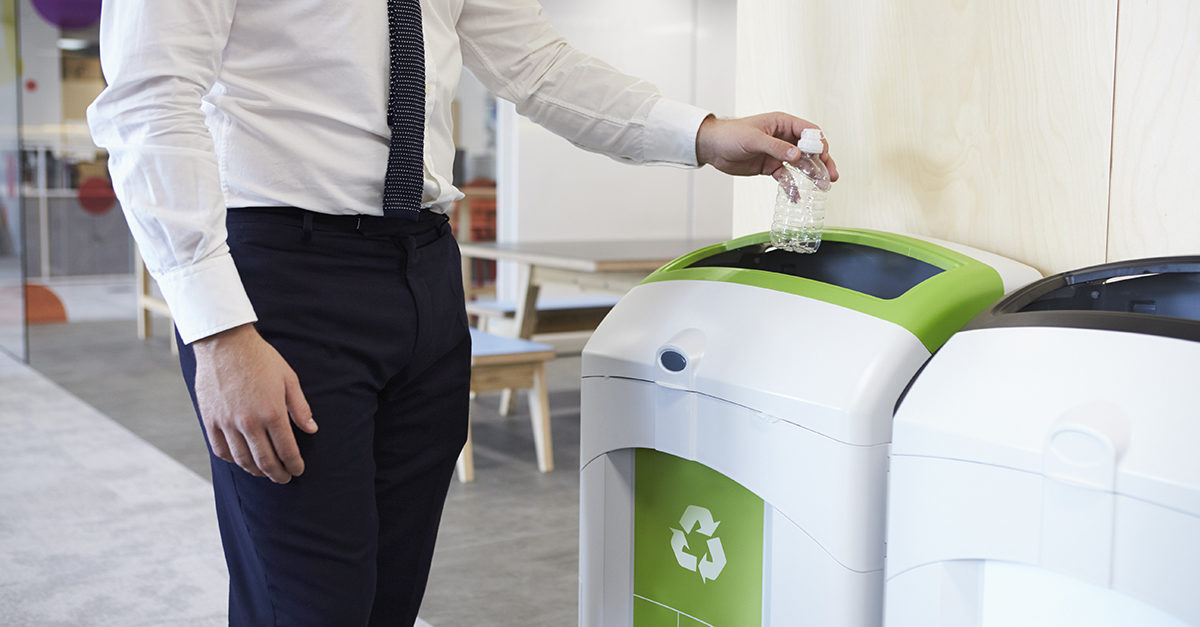Often overlooked, but still very important, is the topic of dealing with waste that is generated by facilities and the people in them. The best solution is not as simple as taking out the trash.
Rather, facility managers and executive housekeepers must start looking at waste management as a streamlined process that requires planning to properly handle.
Proper management of the waste stream can play a critical role in the operation of a facility and impact the health and safety of the surrounding community. For example, improperly managed hazardous waste chemicals can leak into and contaminate groundwater in the neighboring area, possibly rendering residential drinking water unfit for human consumption and use. This type of neglect can lead to expensive cleanup and remediation efforts that can bankrupt the organization that didn’t handle this waste stream properly. One way to proactively avoid these types of risks is by conducting a waste audit.
What is a Waste Audit?
A waste audit consists of actions undertaken within a facility — such as a school, university, hospital, hotel, manufacturing facility, retail store, agricultural site, processing facility, or service center — to review and document a waste stream. Any of the facility types mentioned here may generate several waste streams. Most all of these facilities generate solid, liquid, and electronic wastes; but some also generate high-regulated waste, such as medical waste, low-level radioactive waste, hazardous waste, and in some farm operations, manure waste.
An audit can assist proper waste management by highlighting areas for improvement when it comes to the handling of waste streams. The audit should indicate steps to reduce waste generation and thus, save money for the facility.
Waste audits can target areas for repurposing or recycling. The audit can also be done to ensure the facility is compliant with waste handling requirements, preventing the levying of fines and negative publicity to the facility.
Waste audits are an important aspect for proper waste stream management. They are becoming more important as states, counties, and municipalities seek to reduce the amounts of solid waste going into landfills in addition to the amount of liquid waste, such as pharmaceuticals, from being flushed into sewer systems.
Although waste audits are not commonly conducted at most facilities today, the future regulation of waste streams, or certain components of the waste stream, such as e-waste, will make waste auditing increasingly necessary.
Waste Audit Procedures
Here are some tips for conducting a proper waste audit:
- Start with data. A proper solid waste audit should gather data regarding the current amounts and types of waste a facility generates. Billing information from waste haulers can provide this information; but in some cases, the facility may only be charged for the pulled drop box. If specific weight information is available, use this data to gauge the success of actions that have been implemented to reduce waste; gathering this at the start of the audit is crucial.
- Locate the repositories. Once the auditor determines the amount of waste the organization generates, a walk-through of the facility can determine waste generation sites and the location of waste containers. With this information in hand, the team can brainstorm possible steps for waste reduction.
- Relay changes. Building staff require training about the changes facility managers implement, and solicitation for support is key. Signage showing what types of waste should be placed in specific containers can assist in guiding workers in implementing new waste handling strategies.
- Evaluate changes. Following the principles of the Plan-Do-Check-Act cycle popularized by W. Edwards Deming, the next stage is to evaluate how the new strategies are working. This again relies on data gathering to show if waste production is dropping. This cycle may need to be repeated as you implement further refinements. Document success and graphically display your wins throughout the facility with callouts or signage.
- Make it formal. The final action is to standardize the process by placing the new waste handling methods into the policies and procedures for the facility.
One challenge following the introduction of improvement strategies is the continual monitoring of operations to determine if the staff is following the new waste handling process. For example, while conducting a walk-through of a hospital that had undertaken a paper recycling program, my first stop was at the end of a nursing station touting a properly-filled recycling bin. I was about to offer a favorable comment, when I noticed the regular waste basket at the other end of the nursing station contained the same amount and type of recyclable waste. The nurses were not using the proper container to dispose of their waste, but rather, the closest and most convenient. This sent the waste team back to the drawing board for further refinement of the process.
Technical Challenges
There are also a number of outside factors influencing facilities’ abilities to properly dispose of waste:
Foreign Markets
A current challenge impacting the recycling of plastics within this country is that both China and India have cut back or eliminated the plastic recycling wastes they will receive. The impact of these actions is playing out across our country and could result in a decline in plastic recycling unless local uses are developed for such a commodity.
Market pricing
Additionally, paper and cardboard recycling have experienced fluctuations in demand and pricing in recent years, which have impacted the ability to recycle these products.
Orphan waste
Some types of common-use waste, such as pharmaceuticals, present difficulties with disposal. Formerly, if household pharmaceutical waste was either out-of-date or unused, it would be sewered or sent to a landfill. Today, most waste-water authorities do not want pharmaceuticals being flushed into their systems because they are unable to treat them, and they wind up in the receiving waters of their treatment plants where they cause damage to aquatic life. Similarly, landfills don’t want pharmaceuticals ending up in the waste streams because they leach into their effluents.
Pharmaceuticals have become an “orphan” waste with no easy home for disposal. Most jurisdictions now require them to be sent for incineration or other approved high-heat treatment.
To resolve this challenge, Alameda County in California passed an ordinance requiring all pharmaceutical manufacturers selling drugs in their county to pay for a proper disposal system for home-generated pharmaceutical wastes with no charge to the customers. The ordinance was challenged by the pharmaceutical industry; but the county won in the Supreme Court. California followed suit and passed similar legislation on a statewide basis that was signed into law. Currently, legislation with similar requirements on the pharmaceutical industry is moving through the process in several other states.
Get Started Now
Waste stream management is, if not already for your facility, going to be a hot topic that must be addressed. It’s better to get in front of this and be ready with a solid waste stream management plan. Look into having a waste audit performed at your facility and get your plan into place.


